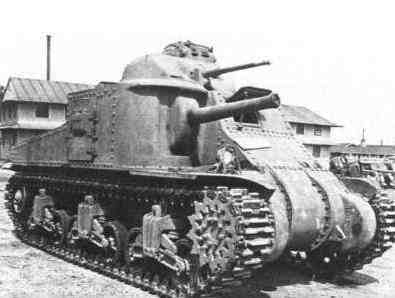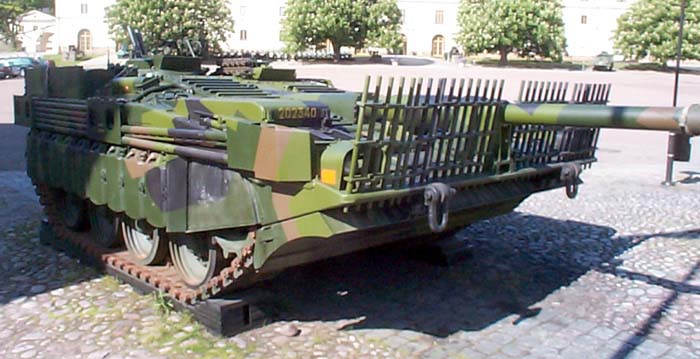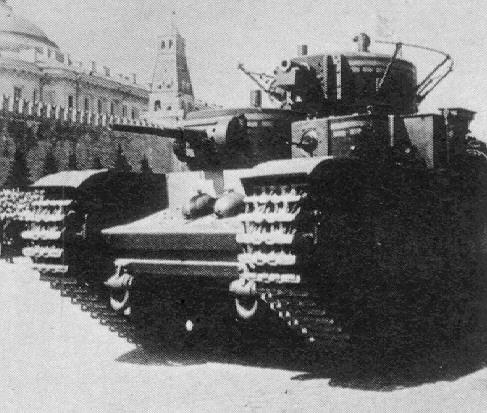Whatever, it was it’s a monster…
http://community.webshots.com/photo/550491773/2977434710089413999aXlFsc#

Whatever, it was it’s a monster…
http://community.webshots.com/photo/550491773/2977434710089413999aXlFsc#
This is first soviet heavy T-35. It was prodused 61 T-35 different of modification since 1932-1939.


in spite of great mass (52 tonn) the tank had just 23-mm armor - too thin for effective fight in 1941.
http://bronetehnika.narod.ru/t35/t35.html
I always had this configuration pegged for a french creation. Don’t know why.
It’s look like british 5-towers tank A.I.E.I «Independent» (1929). Has anybody photo of this monster?
Thanks for identifying the T-35.
The Vickers Independent is another one I have never heard of before. This is the only picture google images comes up with…

…at any time if you please.
The Vickers Independent was experimental british tank. It was built not much of these tanks, therefore the photo is so rare.
The Independent had a central gun turret with the 3 pdr (47 mm) gun. To the front two subsidiary turrets each with a Vickers MG, to the rear two more turrets, again each with a single Vickers MG but able to elevate to engage aircraft.
A single prototype was produced in 1926.

The T-35 seems almost to be based on the WWI “land battleship” notion, as does The Vickers’ Independent. Seems to shout more of a political propeganda statement more than it does military effectiveness.
Certainly ,T-35 was developed in 1931 , it’s based on experiense of WW1.
Already at the end of 30 yy multi-tower tanks proved their insolvency.
It is amazing, but Soviet multi-tower tanks have the German origin
During March 1930 for the rendering to technical assistance into the Soviet Union were invited the foreign specialists, in number of whom there was German engineer Edvard Grotte.
Under his management to the autumn of 1931 at the Leningrad plant “Bolshevik” was developed and prepared the experimental medium tank TG. But this tank did not go into the series production. The works on TG were ended, and it was decided to refuse from further services of Grotte.
But even during March 1931. Grotte proposed OF RKKA two versions of 1000-ton monsters with the installation of armament in three or six towers.
In the towers were established two 304- mm of instrument, four 152 and 76- mm and two 45- mm of gun. Tank crew consisted of forty people. The armor protection of the frontal part of the housing and tower reached 300 mm, were onboard - 250 mm, roof and bottom - 60-100 mm. on the machine it was intended to establish several engines with a total power of 24000 hp. which had to ensure the speed of motion to 60 km/h. Transmission of tank - hydromechanical with the electrical system for control. In the undercarriage was provided for primineniye of hydraulic suspension and triple caterpillars. It was acknowledged with the examination of the preliminary design of machine, that the construction of tank will be extremely bulky and complex for the mastery in proivodstve
http://bronetehnika.narod.ru/tg/tg2.html
To me, it always seemed mysterious the thrust of German engineers to the super- and mega- weapon
The idea of multiple turrets was, in age where many turrets were traversed by hand power, an attempt to enable tanks to engage multiple targets. Even modern tanks often have independant cuppolas for the machine guns.
See the M3 General Grant.

It had a “traditional” tank turret on the top, and an extra gun on it’s front right wing.
Some had a third turret on top of the “traditional” turret, fitted with a MG for use against soft targets and aircraft (?!).
M3 General Grant proved its weakness even aginst german T3/4. This generation of multi-tower multi-guns tank die till ww2 in german and soviet tank’s industry.
“The idea of multiple turrets was, in age where many turrets were traversed by hand power, an attempt to enable tanks to engage multiple targets. Even modern tanks often have independant cuppolas for the machine guns.”
Not just to engage multiple targets, but mostly to engage targets different in nature. Early war tanks were either equipped with a relative large caliber-short barreled gun for HE rounds or with small-caliber-large barreled guns for AP purposes. This is due to the fact that the High Explosive rounds require a great explosive charge rather than shell velocity like the Armor Piercing rounds. The turret on top of the M3 is fitted with an AP-gun whereas the turret on the side is fitted with the HE-gun.
Later on in the war guns were created that could fire AP rounds as well as HE rounds. A nice example of that is the change of the Pzkfw IV from the short HE barrel to the longer HE/AP barrel.
I’m not sure that’s true in the case of the Grant, It was only a “stop-gap” tank between the feeble training and light tanks that the underfunded US Army had previously fielded and what became the M-4 Sherman. The Pentagon had not yet developed a turret that could hold a bigger 75mm gun, so they settled for it in the hull, with the standard pre-War Army 37mm anti-tank gun in an already proven turret design.
I’m not exactly sure what you are trying to say. But yes the U.S. lagged behind in tank design, and we knew it. But actually, the British Army had some good success with the Grant in the early part of the Desert War when first introduced, they were an improvement over anything they had previously, and the hull mounted gun’s drawbacks could be tactically compensated for somewhat. The Germans also used their hull mounted guns to good effect (mainly defensively) in their Jagdpanzers, so the concept is not without merit.
In fact, the U.S. Army rejected Walter Christie’s suspension system, a system that the T-34 largely incorporated.
The succes of the hull mounted gun is proven, but the Jagdpanzers (as well as the Sturmgeschutze) had a much lower profile (as did some post-war Swedish tanks with hull mounted guns; the Stridvagn 103 for instance).

However, to fire at anything but tanks, the Grant had to expose itself tremendously which rendered it quite vulnerable. But that the tank design did work, is proven by the fact that the chassis and the track system itself is mostly used in the Sherman.
This is the T35 topic! The weirdest tank of the war! (In my opinion!)
Thoughts? Opinions? Please post! =D



The T-35 was a Soviet multi-turreted heavy tank of the interwar period and early Second World War that saw limited production and service with the Red Army. It was the only five-turreted heavy tank in the world to reach production but proved to be slow and mechanically unreliable. Most of the T-35 tanks still operational at the time of Operation Barbarossa were lost due to mechanical failure rather than enemy action.
Outwardly it was large but internally the spaces were cramped with the fighting compartments separated from each other. Some of the turrets obscured the entrance hatches.
The T-35 was developed by the OKMO design bureau of the Bolshevik Factory, which began work on a heavy tank in 1930. Two teams developed separate designs. The team headed by German engineer Grotte worked on the 100-ton four-turreted TG-5 tank, armed with a 107 mm naval gun, using pneumatic servo-controls and pneumatic suspension. This project was later cancelled.
The concept of large, multi-turreted breakthrough tanks was favored by several European Armies in the 1920s and 1930s. Designs existed in Britain, France, and Germany for such vehicles. The second OKMO team, headed by N. Tsiets, worked on a tank inspired by the British Vickers A1E1 Independent.
By July 1932, a prototype of a 35 ton tank with a 76.2 mm tank gun was completed. The first prototype was further enhanced with four smaller turrets, two with 37 mm guns and two with machineguns. This first prototype had severe defects in its transmission and was considered too complex and expensive for mass production. Therefore work on it was stopped and a new simpler prototype was built.
This new prototype received a new engine, new gearbox and improved transmission. The decision was also made to standardise the turrets used on the T-35 with those used on the T-28, a triple-turretted medium tank. The small machinegun turrets were identical on the two tanks. The large main turret housing the 76.2 mm gun was nearly identical, but those used on the T-28 had an additional, rear-firing machinegun.
On August 11, 1933, the T-35 was accepted for production. Engineering was shifted to the Kharkov Locomotive Factory, and two batches of ten vehicles were completed.
The experiences gained with the two prototypes were used for the main production T-35 Model 1935, which was again improved from the second prototype, with a longer chassis, improved hull and 45 mm guns in place of the 37mms. It started production in 1935, and about 35 were built by 1938. In general, throughout its production run small improvements were made to the individual tanks. Production models had turrets similar to the ones on the BT-5, but without the rear overhang. Some models had flamethrowers instead of one of the 45 mm guns. The final batch was a run of six T-35 model 1938s, which had new turrets with sloped armor all around, as well as modified side skirts and new idler wheels.
Western and Russian historians disagree about the inspiration for the T-35’s design. The former argue it was copied from the British Vickers A1E1 Independent tank, but this is rejected by many Russian specialists. It is impossible to know the truth for certain, but there is strong evidence to support Western claims, not least failed Soviet attempts to purchase the A1E1. At the same time, the influence of German engineers developing similar designs in the late 1920s at their Kama base in the Soviet Union cannot be discounted. What is clear is that borrowing military technology and ideas from other nations was common to the majority of the armed forces in the inter-war years. The Red Army, with its purchase of the British Vickers Carden Loyd Tankette, Vickers E-Light and Cruiser Mk II Medium tanks, and the American Christie suspension, was clearly one of the leading exponents of this practice.
Due to its high cost, the production run of the T-35 ended at just sixty-one tanks.
The T-35 served with the 5th Separate Heavy Tank Brigade in Moscow, primarily for parade duties, from 1935 until 1940. In June of 1940, the question was raised whether to withdraw the T-35s from frontline service, with the option to either convert them to heavy self propelled artillery, or to assign them to the various military academies. The choice was made to use them up in combat instead and the surviving vehicles were collected together into the 67th and 68th Tank Regiments of the 34th Tank Division, which served with the 8th Mechanized Corps in the Kiev Special Military District.
During Operation Barbarossa, ninety percent of the T-35s lost by the 67th and 68th Tank Regiments were lost not to enemy action but through either mechanical failure or because they were abandoned and destroyed by their crews. The most common causes of breakdown were transmission-related. The last recorded action of the T-35 took place during the early stages of the battle of Moscow. Four machines were used in training facilities in Soviet rear. One of them is now available for spectators in Kubinka Tank Museum near Moscow.
The T-35 is sometimes cited as having participated in the Winter War against Finland, but according to Soviet sources it did not. In fact, a prototype (multi-turreted) SMK tank had been sent to the front for testing. This tank was disabled by a Finnish land mine and all attempts to recover the 55-ton behemoth failed. Finnish photographs of the previously unknown tank were mistakenly designated T-35C by German intelligence.
T-35-1 - Prototype
T-35-2 - Prototype
T-35A - Production model.
T-35B - New engine. Only the prototype produced.
SU-7 - Prototypes with a 254 mm gun, 305 mm howitzer, and 400 mm mortar. Weighed over 106 tons.
It was a total miss by the russians to even produce it it was to large and to litlle firepower to opose germans smaller but stronger german tanks
Agreed! I wonder how many of them broke down… 